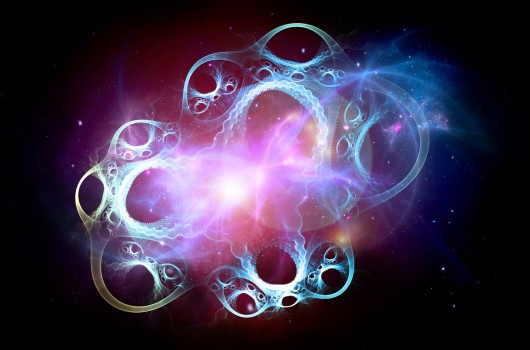

Quantum physics is notoriously complex, and often counter-intuitive to the way in which we perceive our surroundings. Only in the microworld can things pop in and out of existence, or be in two places at once. With that said, it’s utterly fascinating, it makes us question these same perceptions. Now, researchers believe they’ve come a step closer to making sense of the crazy, invisible world these particles inhabit.
In one of the most fascinating behaviors, it has been fully demonstrated that a photon — the constituent part of light — does not exhibit just one property, but two; that of a particle and of a wave. We call this the particle-wave duality, and it has serious implications in the quantum world.
In their press release, the researchers note, “Wave-particle duality is the idea that a quantum object can behave like a wave, but that the wave behaviour disappears if you try to locate the object. It’s most simply seen in a double slit experiment, where single particles, electrons, say, are fired one by one at a screen containing two narrow slits. The particles pile up behind the slits not in two heaps as classical objects would, but in a stripy pattern like you’d expect for waves interfering. At least this is what happens until you sneak a look at which slit a particle goes through – do that and the interference pattern vanishes.”
Then, we have something called the Heisenberg uncertainty principle. First noted by German physicist Werner Heisenberg, it essentially tells us that we can’t know both the position and the velocity of a quantum particle at any given time. In fact, “the more precisely you know the position of an atom, the less precisely you can know the speed with which it’s moving. It’s a limit on the fundamental knowability of nature, not a statement on measurement skill.”
On the surface, the connection between the two might seem minimal at best. Yet now, The researchers suggest that the two quantum entities — the particle wave duality and the uncertainty principle — are similar to the mass-energy equivalence in that they are different expressions of the same thing.
“The connection between uncertainty and wave-particle duality comes out very naturally when you consider them as questions about what information you can gain about a system. Our result highlights the power of thinking about physics from the perspective of information,” says Wehner, who is now an Associate Professor at QuTech at the Delft University of Technology in the Netherlands.
The researchers, from the Centre for Quantum Technologies at the National University of Singapore, were led down this path of discovery by, what they describe as, “a gut feeling, that there should be a connection.” So they set out to prove it with good old fashion mathematics. They specifically aimed at equations, called ‘entropic uncertainty relations,’ commonly used to inquire certain “pairs of properties,” and how they are impacted by the uncertainty principle. Their findings are described in the team’s press release:
They discovered that all the maths previously used to describe wave-particle duality could be reformulated in terms of these relations.
“It was like we had discovered the ‘Rosetta Stone’ that connected two different languages,” says Coles. “The literature on wave-particle duality was like hieroglyphics that we could now translate into our native tongue. We had several eureka moments when we finally understood what people had done,” he says.
Because the entropic uncertainty relations used in their translation have also been used in proving the security of quantum cryptography – schemes for secure communication using quantum particles – the researchers suggest the work could help inspire new cryptography protocols.
In earlier papers, Wehner and collaborators found connections between the uncertainty principle and other physics, namely quantum ‘non-locality’ and the second law of thermodynamics. The tantalising next goal for the researchers is to think about how these pieces fit together and what bigger picture that paints of how nature is constructed.